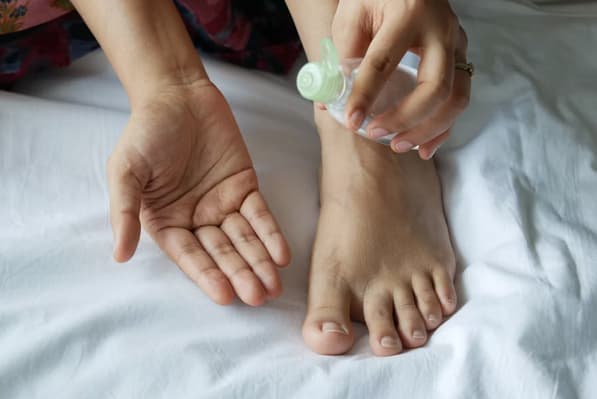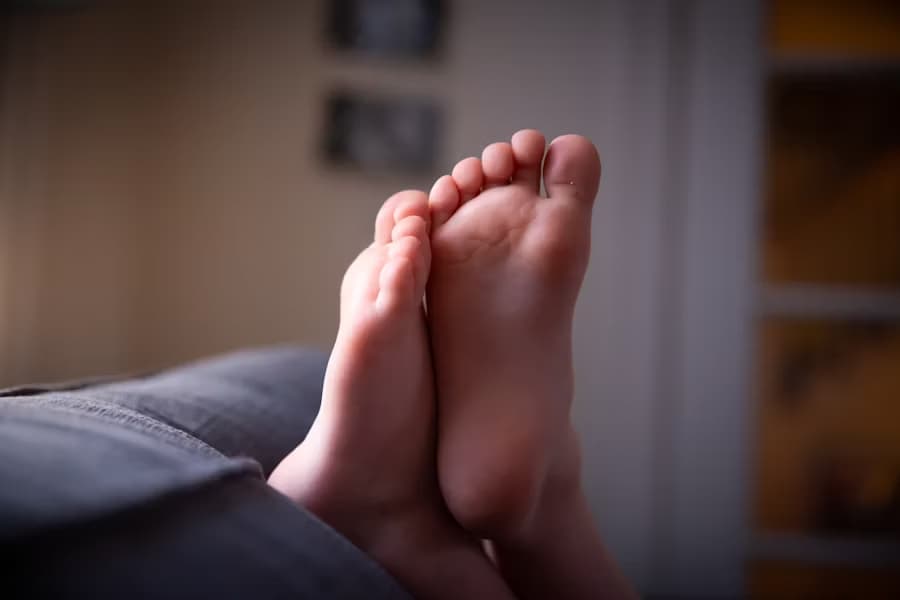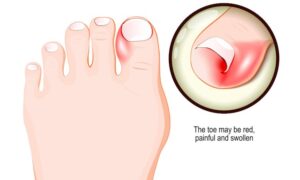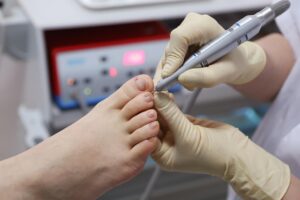Our feet are the foundation of movement, taking on immense pressure every single day. They play a crucial role in providing balance, stability, and cushioning whether we’re walking, running, or simply standing. Unfortunately, many people don’t pay attention to foot health until they experience pain or discomfort. In this article, we’ll highlight the five most common foot problems and share effective prevention tips.
1. Corns and corns: when the skin needs protection
Corns and corns are thickened areas of skin that form in response to constant pressure or friction. They may look like slightly raised yellowish plaques and often appear on the heels, under the toes or on the side of the foot.
Why do they appear?
The reason for the formation of calluses is simple: the skin is trying to protect itself from repeated irritation. The main provoking factors are:
- Wearing tight or too stiff shoes, especially with a narrow toe or high heel.
- Deformities of the foot, e.g. flat feet or valgus (“bump”).
- Lack of regular foot care, which leads to rough skin.
What are the dangers?
Although seemingly harmless, calluses can cause serious discomfort when walking, crack and even become infected. In advanced cases, it can lead to soft tissue inflammation and painful ulcers, especially in people with diabetes or poor circulation.
How to prevent calluses:
- Choose the right shoes. The ideal pair should fit snugly but not squeeze the foot. Pay attention to the softness of the insoles and the absence of rough seams inside.
- Use protective pads and patches. If your shoes are still chafing, you can temporarily protect your skin with special silicone pads.
- Moisturize your skin regularly. Creams with urea (10-20%) help soften the skin and reduce the risk of rough patches.
2. Flat feet: a hidden cause of back and leg pain
Flatfoot is a condition where the natural arch of the foot collapses, causing the sole to flatten and reducing its ability to cushion impacts. Typically, the arch evenly distributes body weight, but when it lowers, extra strain is placed on the foot joints and spine.
How can you recognize it?
- Rapid fatigue when walking or standing.
- Pain in the arch of the foot or ankle joint.
- Wear and tear on the inside of the sole of the shoe.
Why does it develop?
- Hereditary factors and genetic predisposition.
- Excess body weight, which adds extra stress to the feet.
- Prolonged standing during work or, наоборот, a lack of physical activity due to a sedentary lifestyle.
- Wearing shoes without proper arch support, leading to strain on the foot structure.
How to avoid:
- Use orthopedic insoles and shoes. They help maintain the correct position of the foot and reduce stress.
- Strengthen the muscles of the feet. Useful exercises: rolling a ball with your foot, picking up a towel with your toes, walking on your toes.
- Control your weight. Excess body weight doubles the risk of flat feet.
3. Ingrown toenail: a small wound with big consequences
An ingrown toenail is a painful condition in which the edge of the nail plate embeds into the soft tissue of the finger. This leads to redness, inflammation and sometimes suppuration. In advanced cases, granulation tissue (“wild pulp”) may begin to overgrow, which increases pain and makes treatment more difficult.
The main causes are:
- Improper nail clipping. Rounded corners increase the likelihood of ingrowth.
- Tight shoes. Pressure on the toes causes the nail to cut into the skin.
- Injuries to the nail, for example after a bump or pinch.
Why should you pay attention?
If an ingrown toenail is not treated in time, the inflammation can turn into a purulent process, which will require surgical intervention. In addition, a chronic ingrown toenail can deform the nail plate and cause constant pain when walking. In severe cases, the infection can spread to the bone of the finger, provoking the development of osteomyelitis.
Prevention:
- Trim your nails properly. They should remain slightly square, not semicircular.
- Wear spacious shoes. Especially in summer, prefer open toe shoes if there is no risk of injury.
- Keep your feet hygienic. Cleanliness and dryness help prevent inflammation.
4. Plantar fasciitis (heel spur): morning pain in the heel
Plantar fasciitis is an inflammation of the ligament that supports the arch of the foot. It is most often manifested by sharp pain in the heel in the morning when taking the first step. If left untreated, the pain can become chronic and limit mobility, affecting quality of life.
Who is at risk?
- Runners and fitness enthusiasts.
- People who are overweight.
- Those who often wear shoes with thin soles without cushioning.
Why does it occur?
With constant strain on the ligament, micro-tears of tissues appear, which become inflamed. If the problem is ignored, a bony outgrowth may form – a heel spur. It increases pain when walking and requires long-term complex treatment with the possible use of physiotherapy.
Methods of prevention:
- Regular stretching. Exercises for the calves and plantar fascia help maintain tissue elasticity.
- Shoes with good cushioning. Especially if you run on pavement or stand on hard surfaces all day.
- Load control. Alternate periods of activity and rest.

5. Fungal infection of the foot: an invisible enemy
Foot fungus (mycosis) is an infection that affects the skin between the toes, on the soles and nails. Without timely treatment, the infection can spread quickly, causing cracks and sores, creating an entry gate for other bacteria.
How can you get infected?
- Walking barefoot in public showers, swimming pools, saunas.
- Using other people’s shoes or towels.
- Increased sweating of the feet, creating ideal conditions for fungus.
Why it’s dangerous?
A fungal infection can spread to the nails, making treatment more difficult. It is also contagious to other people. With a weakened immune system, the fungus can penetrate deeper layers of the skin and cause chronic inflammation.
How to prevent:
- Always use your own flip-flops when visiting public areas like pools or showers.
- Change socks every day and make sure your shoes are thoroughly dried; opt for footwear made from breathable materials.
- Apply antiseptic products to your feet. Special sprays and powders help manage moisture and lower the chances of fungal infections.


